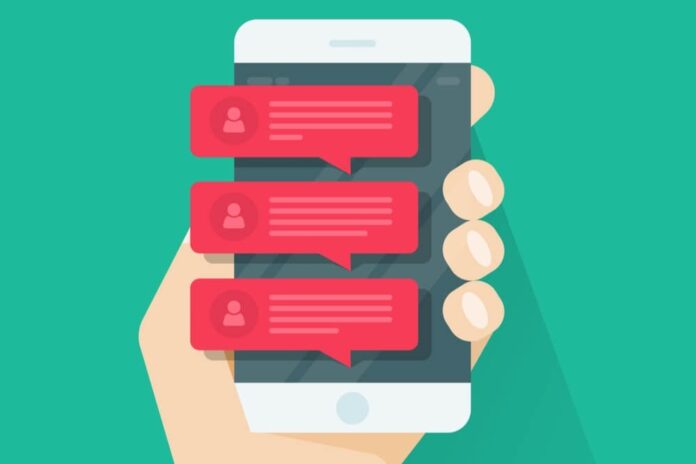Retail isn’t easy—every sale is a battle. You’re fighting for attention in a market where shoppers scroll faster than they blink, brand loyalty is almost extinct, and ads cost more than ever. You’re not just trying to sell.
You’re trying to survive, stay relevant, and get real results without blowing your budget on things that don’t work. But here’s what’s wild: one simple strategy, often overlooked and rarely executed right, can change your numbers faster than any shiny new ad campaign.
We’re talking about text messages.
Not email blasts. Not Instagram reels. Not QR codes on receipts. One text. Sent at the right time. With the right message. Crafted with intention. It’s sharper than most marketers give it credit for, and if you’re serious about tripling your revenue, you can’t afford to ignore it.
Why Text Messaging Still Has the Upper Hand

Let’s not pretend people aren’t glued to their phones. You see it in line at the grocery store, during family dinners, even during meetings. That tiny screen has replaced billboards, newspapers, catalogs, and TV ads—and it wins attention without asking for it.
Here’s what makes text messaging different from every other tool in your marketing arsenal: it gets read. It doesn’t land in a spam folder. It doesn’t fight for space on a cluttered feed. It doesn’t need a creative agency or a massive budget. It shows up right where your customer is already looking.
Text messages get opened. They get read. And if done right, they get action.
But you can’t manually send hundreds of texts to individual customers every week—at least not without losing your mind or missing your real job. That’s where a reliable mass texting service makes a real difference.
It gives you the power to reach your entire audience instantly, without sacrificing personalization.
With the right platform, you can schedule, segment, and automate messages based on real customer behavior—so each text still feels like a one-on-one conversation, even if it’s going out to thousands.
People check texts within minutes. Not hours. Not days. Not when they feel like it. If your brand has something worth saying—and you say it at the right moment—it sticks.
But there’s a catch.
You only get one shot. One message. One tiny block of words to move someone from “I don’t care” to “I’m checking out now.”
That’s where most brands crash and burn. Not because texting doesn’t work. But because lazy texts never do.
What Separates a High-Converting Text from Just Another Notification

You’ve probably received texts from brands that make you cringe. You know the type: the dry “FLASH SALE TODAY!!!” with five exclamation points and zero personalization.
It’s the kind of message you delete without thinking twice. Now ask yourself—would you ever respond to a message like that? Probably not. Neither would your customers.
Here’s what changes the game: strategy. Texts don’t need to be flashy. They need to be timely, tailored, and clear.
Start with why you’re texting. Is there a purpose beyond pushing a sale? Has the customer shown interest recently? Did they abandon a cart, click on a product, or engage with your site?
When you build your message based on behavior rather than guessing, you step into real influence. You’re no longer just another brand shouting into the void—you’re responding to a signal. And people love when brands notice.
A customer who bought a blue wool coat last month doesn’t want a generic 10% off code. They want a reason to believe that you still remember them.
If you send a message like, “We just dropped a new scarf collection—your coat would thank you,” it shows thought. It shows care. And most importantly, it sounds like a real person.
You’ve just reminded them why they liked you in the first place.
How One Smartly Timed Text Can Trigger a Revenue Surge
The idea here isn’t to spam your entire list. It’s to choose the moment that matters. If you time a single message around behavior, pattern, or intent, that one outreach can flip a passive shopper into an active buyer.
Some retailers obsess over volume. They want to hit big numbers fast. But volume means nothing without intent. You don’t need 10 texts a month. You need one that works.
So what does “the right moment” actually mean?
It could be:
- When a high-value product was viewed but never purchased.
- After a cart has been left behind for more than 30 minutes.
- If a customer hasn’t shopped with you in over 45 days.
- On a birthday or signup anniversary.
- Right before a product is about to go out of stock.
Each of these points represents a real emotional touchpoint. A moment where your customer is more likely to care. If you lean into that moment with a message that’s clear, relevant, and human, you’re not sending a text—you’re opening a door.
And if you combine that with a time-sensitive offer or exclusive preview, now you’re not just reminding them you exist. You’re giving them a reason to act right now.
How to Write a Text That Customers Actually Want to Respond To

Too many marketing texts sound like they were written by a spreadsheet. Flat. Robotic. Rushed.
If you want your message to drive revenue, it needs to feel like it came from a person who knows what the customer likes—and why.
That starts with tone.
Your tone should feel warm, helpful, and natural. You’re not a bot. You’re the smart store assistant who remembers what they bought last season. You know their taste. You know what just arrived. And you know when they’re most likely to fall in love with something new.
Here’s a quick litmus test before you send any text:
- Would you open this if you weren’t the sender?
- Does it sound like something you’d say to a friend?
- Is there only one thing the reader has to do after reading?
If you check those boxes, you’re on the right path.
So instead of, “BIG SALE ON SHOES TODAY!” try this:
“We just restocked the sneakers you clicked on last week—thought you might want first dibs before sizes go.”
That message isn’t loud. It’s not desperate. It’s direct, relevant, and helpful. It reminds the customer that you’re paying attention—and that’s where the money is.
The Mistakes That Ruin Text Marketing Before It Even Starts
Let’s be honest: there’s a reason some brands swear by SMS while others write it off entirely. It’s not about the platform—it’s about the execution. When texts don’t work, it’s usually because they were built wrong from the start.
Some of the most common mistakes include:
- Too much frequency – Sending texts every week makes your audience numb. They’ll stop caring. You want to show up only when it matters, not because your calendar told you to.
- No personalization – Saying “Hey there!” in a text to a loyal customer feels lazy. Use names. Mention past orders. Reference style or behavior cues.
- Vague copy – “Click now to shop” tells them nothing. What are they clicking? Why should they care? Always give a clear and specific reason.
- Sounding corporate – People respond to people. If your message sounds like it was approved by five departments, it’s probably not working.
Avoiding these mistakes doesn’t require a team of copywriters. It just requires intention.
A Simple Text Funnel That Brings Customers Back Again and Again

You don’t need a massive list or endless campaigns. You need a smart, intentional sequence that speaks to the right people at the right time.
Here’s a simple three-text funnel that creates repeat buyers without overwhelming them:
Step 1: Post-purchase surprise
Once someone buys, send a thank-you message within 48 hours. Not just gratitude—give them a small bonus for coming back.
“Loved packing your order today! Here’s 15% off your next pick—valid through the weekend.”
Step 2: Personalized re-engagement
After 30 days of no purchase, check in with a product that matches their previous taste.
“We just added more cozy cardigans—you might like the charcoal one based on your last order.”
Step 3: VIP early access
Every few months, make loyal buyers feel special with early access or private drops.
“Just for you—early access to our spring edit. Ends tomorrow. You get first choice.”
This sequence isn’t pushy. It builds trust. And trust turns browsers into loyal, high-value buyers.
Tools That Make SMS Automation Feel Personal, Not Robotic
You don’t have to sit there texting manually. But automation should never feel automated.
The best SMS tools allow you to create flows based on behavior, customer profiles, and timing. But even better—some let you preview messages exactly how they’ll appear to customers so you can tweak the voice.
Here are three tools worth exploring:
- Postscript – Great for Shopify stores that want smart triggers and quick setup.
- Klaviyo SMS – Integrates email and SMS, ideal for brands that want unified campaigns.
- Attentive – Known for hyper-personalized flows and data-driven segmentation.
The right tool saves time, increases reach, and ensures every message feels thoughtful.
Don’t Wait for Another Sale. Send the One Text That Changes Everything
You’ve probably spent hours thinking about ad budgets, influencer campaigns, or in-store signage. But one of your strongest levers is right in your pocket.
Pick one segment. One customer type. One behavioral trigger.
Write one message.
Make it clear. Make it timely. Make it sound like it came from someone who actually cares about the person reading it.
Then send it.
Because the brands that win in retail aren’t always the ones who shout the loudest—they’re the ones who show up when it matters. And in most cases, all it takes is one well-crafted text to make your customers come back—and bring their friends.
That’s how you triple your revenue.
And you don’t need to scream. You just need to text smart.










